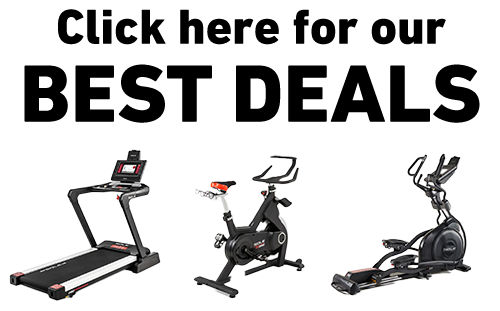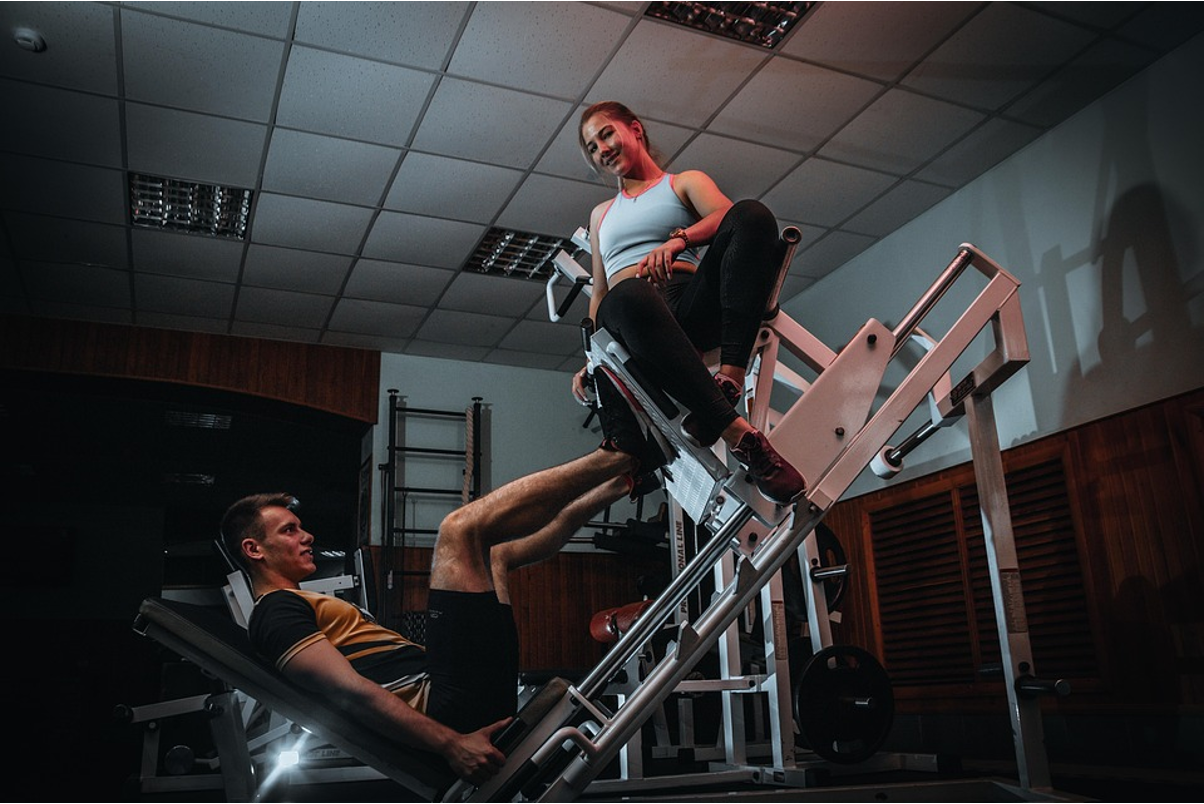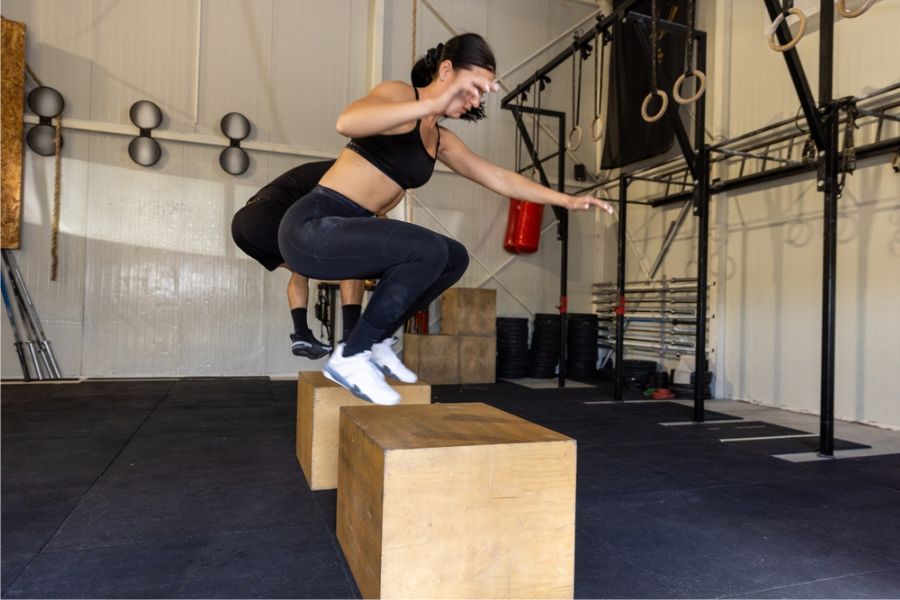Key Takeaways
- Effective pull up alternatives require minimal equipment and can build comparable back strength to traditional pull ups.
- Towel rows offer a versatile, door-based alternative that can be scaled to any fitness level.
- Resistance bands provide progressive overload potential without needing a fixed bar.
- Floor Y-T-I raises activate multiple back muscles with zero equipment needed.
- SOLE's adjustable dumbbells and weight bench transform these basic alternatives into progressive strength-building systems that rival gym equipment.
Why You Need Pull Up Alternatives (And How They Build Your Back)
Traditional pull ups are often called the king of back exercises because they engage multiple muscle groups simultaneously. But that doesn't mean they're the only way to build a strong, defined back.
In fact, targeted alternatives can sometimes provide even better isolation and mind-muscle connection than struggling through partial pull ups or using excessive momentum.
The key to effective pull up alternatives is understanding the biomechanics. Pull ups primarily target your latissimus dorsi (lats), rhomboids, trapezius, and rear deltoids through a vertical pulling motion.
The alternatives we'll check out recreate similar movement patterns and muscle activation through different angles and resistance methods.
What makes these alternatives particularly valuable is their scalability. While traditional pull ups present a significant strength barrier for beginners, these modifications allow everyone from fitness newcomers to advanced athletes to train effectively.
You can progressively increase difficulty as you build strength, creating a clear pathway to eventually mastering traditional pull ups.
The best exercise isn't the one that looks most impressive—it's the one you can perform with proper form that challenges your muscles appropriately for your current fitness level. These three alternatives accomplish exactly that while requiring nothing more than basic household items.
|
Build Your Foundation with Premium-Grade Strength Equipment! 
Why Choose SOLE Strength: ✓ Heavy-duty steel construction with rust protection 30-Day Money-Back Guarantee: Love it or return it, no questions asked. |
Towel Rows: The Ultimate Door-Based Alternative

Towel rows transform an ordinary household door into a powerful back-building station, mimicking horizontal pulling motions that effectively target your mid-back muscles.
How To Set Up Your Towel Row Station
Creating your towel row station requires minimal setup and can be done in under a minute. All you need is a sturdy door and a bath towel or two hand towels.
Take a bath towel and fold it lengthwise until it's about 4–6 inches wide. Drape the towel over the top of a closed door near the hinge side (this is the strongest part).
Close the door firmly, ensuring the towel is securely pinched at the top. Test the setup by gently pulling on both ends of the towel to confirm it's stable.
For a more comfortable grip option, you can use two hand towels instead, draping each one over the door approximately shoulder-width apart.
This variation allows for a more natural pulling position similar to using two handles.
Proper Form For Maximum Back Engagement
The effectiveness of towel rows depends entirely on your form. To properly engage your back muscles rather than relying on arm strength, positioning is critical.
Start by standing with feet shoulder-width apart, then lean back with arms fully extended holding the towel ends.
Your body should form a straight line from head to heels, with only your heels touching the ground. The more horizontal your body, the more challenging the exercise becomes.
When pulling, focus on driving your elbows back and down while squeezing your shoulder blades together.
This elbow-driven movement ensures your back muscles do the work rather than your biceps. Pause briefly at the top position, really focusing on that back contraction before slowly returning to the starting position.
3 Towel Row Variations For Different Difficulty Levels
The beauty of towel rows lies in their adaptability. As your strength improves, you can progress through these three variations to ensure continuous growth without hitting a plateau.
Beginners should start with the modified towel row. Stand more upright with feet further from the door, creating a steeper body angle that reduces the resistance. This position makes the exercise more manageable while you develop proper form and initial strength.
As you progress, move to the standard position with your body at roughly a 45-degree angle to the floor. This intermediate variation provides balanced resistance while teaching you to engage your core stability muscles simultaneously with your back.
For advanced practitioners, the horizontal towel row places your body nearly parallel to the floor, maximizing resistance and requiring significant core strength to maintain proper positioning throughout the movement.
Resistance Band Bent-Over Rows

Resistance bands provide variable resistance throughout the movement, often creating greater tension at the point of maximum muscle contraction where you want it most.
Choosing The Right Resistance Band
Selecting the appropriate resistance band can make the difference between an effective workout and one that's either too easy or impossibly difficult.
For bent-over rows, you'll generally want a loop-style band (also called a power band) rather than a band with handles. These provide more versatile anchoring options and allow for natural movement patterns.
If you're new to resistance training, start with a lighter band (typically color-coded as yellow, red, or green depending on the brand). Those with more strength experience might begin with medium resistance (often blue or black).
The ideal band should allow you to complete 8–12 repetitions with proper form while feeling significant resistance in the last few reps.
Setup And Anchor Points
Finding a secure anchor point is essential for resistance band rows. The most stable option is to stand in the middle of the band with both feet, creating a solid foundation.
Spread your feet slightly wider than shoulder-width to increase stability and prevent the band from slipping.
For greater resistance, you can choke up on the band by wrapping it around your hands or gripping higher on the band.
This technique effectively shortens the band, increasing tension throughout the movement. Just ensure you maintain equal grip width on both sides to keep the exercise balanced.
Technique For Maximum Lat Activation
To maximize back engagement with band rows, posture is everything. Hinge forward from your hips until your torso is nearly parallel to the floor, maintaining a slight bend in your knees. Your back should remain flat throughout—neither rounded nor hyperextended.
Start with arms extended toward the floor, then pull the band toward your torso by driving your elbows up and back. The band should reach approximately the height of your lower ribs or belly button at the top position.
Focus intensely on squeezing your shoulder blades together at the top of each repetition, holding briefly before controlling the descent.
Bodyweight Floor Y-T-I Raises

Y-T-I raises might look simple, but when performed correctly, they create surprising muscle activation throughout your entire posterior chain using only floor space.
Y-Raise Technique For Upper Back
The Y-raise targets your upper trapezius, rhomboids, and rear deltoids—muscles that help support proper posture and shoulder stability.
Begin by lying face-down on the floor with arms extended overhead in a Y position, thumbs pointing upward to engage external rotators.
From this position, engage your core to stabilize your spine, then lift your arms, chest and head slightly off the floor. The movement doesn't need to be large; even a few inches creates significant muscle activation.
Hold the raised position for 2–3 seconds while squeezing your shoulder blades together and down, then lower with control.
T-Raise Technique For Middle Back
The T-raise shifts focus to your middle trapezius and rhomboids, muscles that are crucial for proper shoulder blade positioning. Start in the same face-down position, but with your arms extended directly out to your sides, forming a T shape with your body.
Keep your thumbs pointing up to maintain external rotation. Squeeze shoulder blades together as you lift. Keep your neck in neutral alignment (look down rather than forward). Maintain contact between your forehead and the floor to prevent neck strain.
For maximum effectiveness, focus on using your back muscles rather than arm strength to create the lifting motion. Imagine your arms as passive extensions being moved by the powerful muscles of your mid-back.
I-Raise Technique For Lower Back
The I-raise completes the sequence by targeting your lower trapezius, erector spinae, and deeper stabilizing muscles of the back.
Position yourself face-down with arms extended alongside your body, palms facing inward toward your thighs.
As you lift your arms, focus on keeping them straight and close to your body. The movement should feel like you're trying to reach your hands toward your feet while they remain extended.
This unusual position creates distinct activation in the lower portions of your back muscles that complement the work done in the previous positions.
Elevate Your Pull Up Alternatives with SOLE's Progressive Equipment

SOLE strength equipment transforms basic pull up alternatives into a comprehensive progression system that rivals expensive gym machinery while fitting in your home.
Ready to transform these basic pull up alternatives into a comprehensive back-building system? The SOLE SW101, SW155, and SW180 Adjustable Dumbbells change up your home back training by providing the progressive resistance these exercises need for continued growth.
Use light weights to enhance Y-T-I raises, perform single-arm supported rows, or create challenging bent-over row variations that surpass what resistance bands alone can provide.
The SW116 Weight Bench becomes your versatility multiplier, enabling chest-supported dumbbell rows that eliminate lower back stress while maximizing lat activation. The bench also provides the perfect platform for incline towel row variations and serves as an anchor point for advanced resistance band exercises that weren't possible with floor-based training alone.
The SOLE Equipment Mat provides essential comfort and stability for floor-based movements, while its generous 36.5" x 78" size accommodates all the Y-T-I positions comfortably.
The superior grip prevents sliding during dynamic towel row setups, creating a professional training environment in any home space.
What makes SOLE perfect for pull up alternative training is the systematic progression capability. Start with bodyweight movements on the mat, progress to light dumbbell variations using the bench, and eventually advance to weighted resistance that builds the strength needed for traditional pull ups and beyond.
The SOLE+ App includes structured back training programs that seamlessly blend these alternatives with progressive resistance training, ensuring you never plateau or wonder what comes next in your development.
Frequently Asked Questions (FAQs)
Can I build as much back muscle without a pull up bar?
You absolutely can build comparable back muscle without a pull up bar if you focus on progressive overload and proper technique. The key factor in muscle development isn't the specific exercise but rather creating sufficient mechanical tension and metabolic stress in the target muscles.
How often should I do these alternative exercises?
For optimal back development, train these pull up alternatives 2–3 times per week with at least 48 hours between sessions to allow for proper recovery. Your back muscles, particularly the larger lats and traps, require adequate recovery time to repair and grow stronger. If you're a beginner, start with twice weekly sessions and gradually increase frequency as your recovery capacity improves.
What household items can I use as weights for these exercises?
Several household items make excellent improvised weights to progress these exercises. For Y-T-I raises, filled water bottles (16 oz) provide perfect incremental resistance. Books secured with rubber bands, canned food items held firmly in your hands, or even socks filled with rice and tied off can serve as makeshift weights.
Will these exercises help me eventually do real pull ups?
These alternatives absolutely build the foundational strength needed to perform traditional pull ups. They develop the same muscle groups such as lats, rhomboids, traps, and biceps, that pull ups target. Many people who consistently practice these alternatives for 8–12 weeks find themselves able to perform their first pull up or significantly increase their pull up numbers.
How can SOLE equipment enhance these pull up alternatives for better results?
While these exercises work effectively with minimal equipment, SOLE's fitness equipment significantly enhance your progression and results. The SOLE Equipment Mat provides essential cushioning for floor-based Y-T-I raises, protecting your body during extended training sessions while ensuring stability. The SW180 Adjustable Dumbbells transform these basic alternatives into progressive strength-building systems, use them for weighted Y-T-I raises, single-arm bent-over rows, or chest-supported rows using the SW116 Weight Bench.







Leave a comment
This site is protected by hCaptcha and the hCaptcha Privacy Policy and Terms of Service apply.